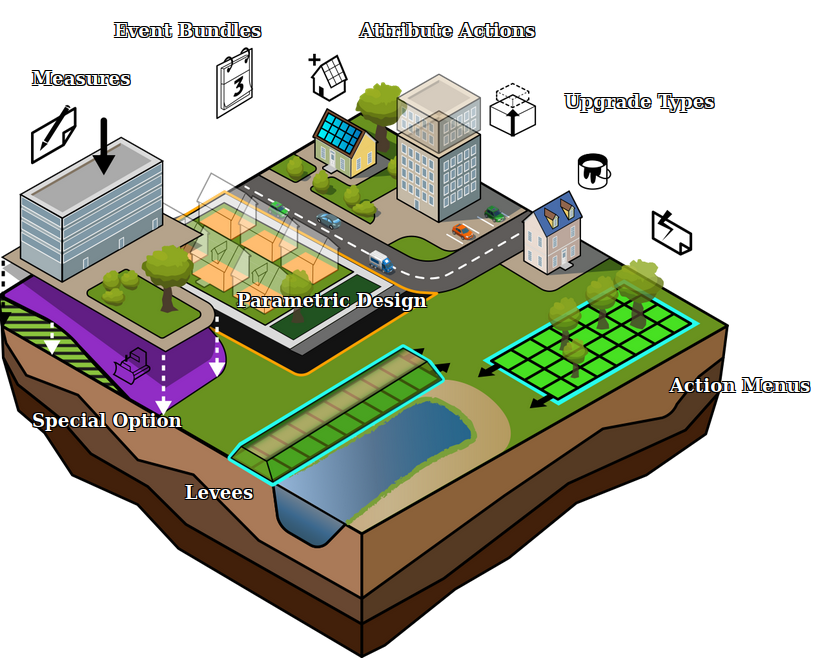Event Bundle: Difference between revisions
| (13 intermediate revisions by the same user not shown) | |||
| Line 1: | Line 1: | ||
Event bundles are collections of events that can be triggered as one package. The advantage over loose events is that event bundles can be triggered by multiple sources. Event bundles can be used to trigger events at specific points during a [[cinematic]]. Additionally, event bundles can | [[File:Api_future_design.png|thumb|right|400px|[[Event Bundle]]s in relation to other [[Action]]s]] | ||
Event bundles are collections of events that can be triggered as one package. The advantage over loose events is that event bundles can be triggered by multiple sources. Event bundles can be used to trigger events at specific points during a [[cinematic]]. Additionally, event bundles can be added to [[Action Menu]]s, such that stakeholders can trigger these events directly as an action. This can be useful to, for example, rewatch a cinematic. | |||
==Server events and client events== | ==Server events and client events== | ||
Events in event bundles can be split into two groups: server events and client events. | |||
===Server Events=== | ===Server Events=== | ||
[[Server Event]]s are events which are communicated to the server, and may have effects for all stakeholders. An example of this is the activation of a measure. This may affect the [[project]] spatially, visually in the [[3D Visualization]], and the indicator scores; changes which are also visible and possibly important to other stakeholders. | |||
===Client Events=== | ===Client Events=== | ||
[[Client Event]]s are not communicated to the server and and are usually a graphical effect for the stakeholder who triggered the event. Examples of this include flashing an [[Action Menu]] to draw the user's attention, or the visualization of a [[weather]] effect. | |||
{{article end | |||
|howtos= | |||
* [[How to add and remove Event Bundles]] | |||
* [[How to edit Event Bundle events]] | |||
|seealso= | |||
* [[Client Event]]s | |||
* [[Server Event]]s | |||
}} | |||
{{Template:Editor_future_design_nav}} | {{Template:Editor_future_design_nav}} | ||
[[Category:Items]] | [[Category:Items]] | ||
Latest revision as of 11:03, 21 February 2023

Event bundles are collections of events that can be triggered as one package. The advantage over loose events is that event bundles can be triggered by multiple sources. Event bundles can be used to trigger events at specific points during a cinematic. Additionally, event bundles can be added to Action Menus, such that stakeholders can trigger these events directly as an action. This can be useful to, for example, rewatch a cinematic.
Server events and client events
Events in event bundles can be split into two groups: server events and client events.
Server Events
Server Events are events which are communicated to the server, and may have effects for all stakeholders. An example of this is the activation of a measure. This may affect the project spatially, visually in the 3D Visualization, and the indicator scores; changes which are also visible and possibly important to other stakeholders.
Client Events
Client Events are not communicated to the server and and are usually a graphical effect for the stakeholder who triggered the event. Examples of this include flashing an Action Menu to draw the user's attention, or the visualization of a weather effect.